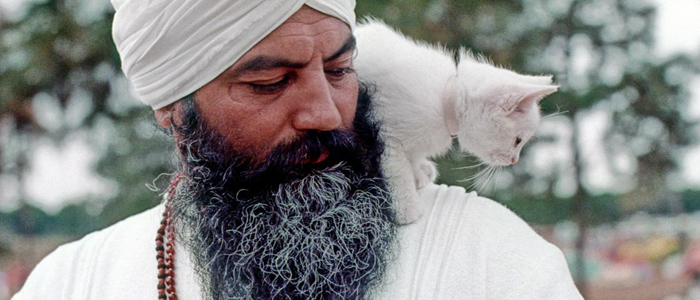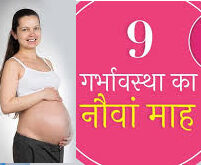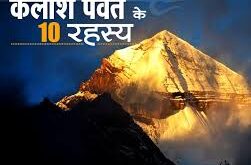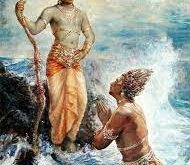
The Kundalini. Research Institute was fomEd to share the conscious teehn:Jlogy of total living that has been taught by Yogi Bhajan, master of Kundalini Yoga and
~rld
renawned spiritual leader. This wholistic approach to a rich and satisfying life includes the practice of Kundalini Yoga and the sharing of a cornnunity-eentered lifestyle as vehicles for greater self-awareness. Four major program:; for distri buting the \\ealth of these teachings have been developed by the Kundalini Research Institute: research, education, counseling, and publication.
In the research program at KRI, the wisdan of the East blends with the technology of the west to c10currEnt the physical effects of practincing Kundalini Yoga. A number of ongoing projects are currently being sponsored by KRI, serre of which are in colla1:xJration with colleges, universities, and other scientific research institutes.
An exciting and varied e::iucational program has also been developed at KRI. Courses in exercise and rreditation are supplemented by courses drawn fran the tapestry of Kundalini Yoga philosophy. These classes include vegetarian cooking; natural healing; therapeutic massage and relaxation techniques; narriage, maternity, and child care; and open carnnunications. Courses are offered through ccmmmity centers, park and recreation departrrents, schools and colleges, private businesses, and various ashram:; (yogic teaching centers) .
Counseling services offered through the Kundalini Research Institute errphasize not only treatment but, nore inpJrtantly, human growth. Through the integration of Kundalini Yoga methodology with tramtional cxnmseling, the client is given opportunities to experience a fuller range of his potentials. He is given useful tools for handling the stresses of everyday living. The continued p::>sitive response of clients to this technique encourages the use of Kundalini Yoga as a therapeutic medium.
KRI Publications is another inportant branch of the Institute. Func tioning as a vehicle both for distributing the infonnation gathered from the canbined scientific, educational, and counseling programs, and as a clearing house for the collected teachings of Yogi Bhajan, KRI has been publishing journals and yoga manuals since the early seventies. This year a number of publications will be distributed nationally. These include a new periodical, Ktn’)jalini Quarterly; a series of 1::x::oks and manuals concerned with the techniques and life style of Kundalini Yoga; and the publishing of the carplete lectures of Yogi Bhajan, founder of the Institute.
By sharing the teachings with people everywhere, the Kundalini Research Institute seeks to expand the CXIlllOO base of nan r S experience so that each person can realize his part in the process leading toward a healthier, happier life for all.
PREFACE
This Manual has been assembled out of the backlog of unpublished materials collected to date from many classes taught by Yogi Bhajan . during the last six years. This collection represents only a small part of the wide range of meditations and exercises that might have been included. We have attempted to provide you with a well-integrated collection, inclu ding many exercise sets taken from the Clare mont College classes of early 1970. These sets are unique in their simplicity and in the phy sical power that practicing them will generate, (as well as in the great physical and mental peace that follows.) Several of the meditations are taken from the “3HO Advanced Class,” taught at 3HO Inter national Headquarters in Los Angeles. This class, taught by Yogi Bhajan at regular inter vals, is an ongoing vehicle and resource for the growth and inspiration of all those who have been blessed with the experience of attending it. For six years it has been the most consistent source for the latest develop ments and training in the art and technology of meditation. Other meditations have been taken from the Summer Course, sponsored annually by KRI (Kundalini Research Institute) in New Mexico. Many were taught by Yogi Bhajan during morning sadhana, and represent a certain level of refinement and subtlety in technique that the more advanced student will greatly appreciate. “Sadhana” means spiritual practice. Although every moment of the day should be lived to the fullest in conscious action, that period of time three hours prior to the rising of the sun is particularly favorable for one’s yogic sadhana. It is at this time that the energies of the planet and those of the indivi dual psyche are most physically in tune. This, then, is the best time to “tune in” to these and attainment. Yet, in a greater sense, we always remain students–even as teachers we can always learn and benefit from the experience that practice provides. In this spirit let us cherish each exer cise set, kriya, and meditation that the present volume provides. Let us honestly practice them and derive the full benefits that they promise. Yogi Bhajan has often reminded us that “practice makes perfect,” and lias you sow, so shall you reap.” These ancient and universal truths beckon us to make more than a casual investrnent–more than the price of this publication–more than a mere Buperficial glossing over the contents herein. We are called upon to make the most of the time available to us during our lifetime. If it is liberation that we are seeking then we should proceed first and foremost to the task that is ahead of
us~
for “there is no
liberation without
labor~
there is no freedom
which is free.” Life, fortunately, has its lighter and_ more entertaining side(s). Relax, be well, and enjoy the gems of wisdom and experience that you find within. Grow, glow, and radiate in the light and love of your own quest. It is towards the One that we are all directed. To see that One in everyone is our greatest
privilege~
to experience that One within our selves is our greatest joy. SAT NAM and the best of all possible worlds to you all.
HOW TO USE
Fundamentally, we all know what it is that we are searching for. In all cases, the answer to our questions will arrive via some sort of experience. In the case of our undertaking either a seri ous or an investigatory (out of curiosity or casual interest) yogic practice, it is still an experience that we are seeking, even though we may not know exact ly what it is that we are seeking to experience. In any case, whether we consciously know it or not, at the bottom of all our seek ing there is one thing that we want to explore and know–it is that unknown and uncharted terri tory of the inner or higher self. This manual will allow you to do just that–explore your unknown potential. It will tell you what you need to do to get to the state of consciousness that you want to attain, though it is you who must choose which direction you will follow. Each meditation or kriya has been fully described and illus trated to provide you with suffi cient, accurate information to practice it on your own. In addi tion, whenever possible, a thorough analysis of each exercise is made indicating the potential physiologi cal, psychological, and spiritual benefits derived from their prac tice and mastery. An index is provided at the end of the manual to help you find meditations or exercises that might deal more directly with what ever problem or growth areas you may be interested in. Even though each of these exercises are written out in great detail and you may be able to prac tice them on your own; unless you are a seasoned student of Kundalini Yoga, you would do yourself a great service to visit your local 3HO teacher for introductory instruction. Many of the tech-
THIS MANUA
nigues outlined in this manual are best learned through the instruc tion of a trained 3HO Kundalini Yoga teacher. A teacher can help you to acquire and develop a sense of timing and rhythm for the prac tice of the exercises that are included in this manual as well as those in the many other KRI publi cations on Kundalini Yoga. An experienced teacher can also be of great assistance to you in the matter of helping you to design a yoga regimen that is well-suited to your needs and present abili ties. Please follow the
instructi~ for each meditation or exercise carefully, as they have been very precisely given by Yogi Bhajan to insure that the proper effects will be made possible. Do not make up your own variation. Try to master the exercise as it
is-~ adapt yourself to the situation-
don~
try to change the meditation to suit your level of ability or attainment. You may have to choose to shorten the lengths of some exercises, especially the more difficult ones. In general, however, you will find that if you just practice the exercises as they are written, you will experi ence the results desired. As an aid to the development of a strong yogic practice, the following guidelines may be help ful: 1) It is important to begin each session by centering yourself and relating to that higher con sciousness that is at once the teacher and the student. In Kunda lini Yoga as taught by Yogi Bhajan, we begin each class by a saluta tion to the infinite source of these teachings. This salutation is: ONG NAMQ GURU DEV NAMO. “ONG” means infinity in its creative or immanent aspect. “NAMO” means to call upon, to bow to, and to give
1
salutations or greetings to. “GU” means darkness; “RU” means light. “GUR” refers to the technical know-how of consciousness eleva tion; “GURU” is the one or the way which embodies that technology to go from the lower to the higher consciousness. “DEV” means trans parent, higher, divine. The mantra is chanted with one full deep breath as in the following musical notation:
~
. ONG NA – MO
t¥$~
GU-RU DEV – – NA-MO
Chanting this mantra, known as the Adi Mantra, is an act of calling on that infinity with that embodiment of higher wisdom. 2) After the chanting of the Adi Mantra, you should clear the nerve channels that are connected with the nostrils by practicing some breathing exercises. l One simple channel-cleansing series is as follows: Sit in easy pose (a comfort able cross-legged position, see diagram 1), and take the right thumb and pla-e it over the right nostril. Extend the fingers of the right hand straight up. The left hand is in Gyan Mudra, that is, the thumb and forefinger are touching at the tips; and the middle, ring, and small fingers are extended straight out. This hand is rested on the knee or thigh.
lA number of these exercises
have been described in the Guide
lines for a Successful Sadhana
and the Summer Solstice, 1975
manual, previously pUblished by
the Kundalini Research Institute.
(see diagram 2) Breathe long and deep for 3 minutes. Then inhale deeply, hold briefly, and exhale. Change hands and breathe long and deep through the left nostril for 3 more minutes.

Diagram 1
Diagram 2
After completing that, with both hands in Gyan Mudra position, do the Breath of Fire through both nostrils for 3 minutes to balance the body’s energy. If you are unfamiliar with Breath of Fire, it is a rapid breath, activating the abdominal region, and is accom plished by pulling the navel in to force the air out via the nOde,and releasing the navel on the inhale. The inspiration is caused by the relaxation on the pressure against the diaphragm. Breath of Fire may be practiced slowly at first, although the optimum effect will occur when the rate increases to 150-200 repetitions per minute. After practicing this or some other channel-clearing exercise, you may begin to practice sets
such as those included in this manual. It is better to warm up the spine as well as the rest of the body by doing Kundalini Yoga exercises before attempting to practice deep meditation. This is to prepare the nervous system to channelize the energy that deep meditation is capable of generating. If you have an hour and a
half to practice your yoga sadhana, it is possible to tune in, prac tice pranayam for about 10 minutes, exercise for about 30 to 45 min utes, relax for about 10 minutes; and then practice a 31 minute med itation. A detailed analysis of several models for sadhana is available in Guidelines for a Successful Sadhana, mentioned earlier.
 पौराणिक कथाओं, प्रेरक क्षण, मंदिरों, धर्मों, फिल्मों, हस्तियों के बारे में दिलचस्प जानकारी, हजारों गाने, भजन, आरती के बोल हैं Your wish may come true today…
पौराणिक कथाओं, प्रेरक क्षण, मंदिरों, धर्मों, फिल्मों, हस्तियों के बारे में दिलचस्प जानकारी, हजारों गाने, भजन, आरती के बोल हैं Your wish may come true today…



























